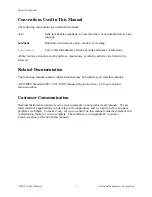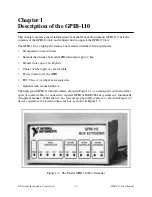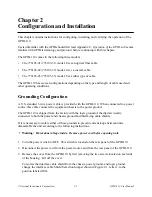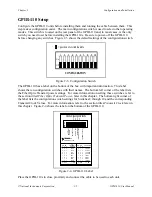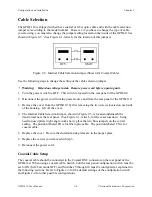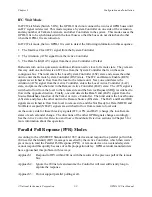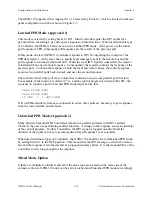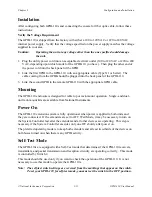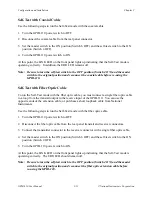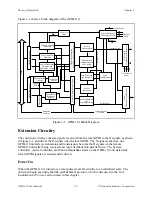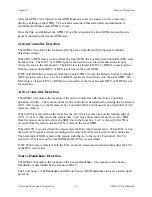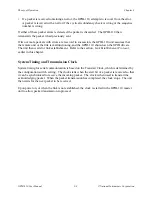
Chapter 2
Configuration and Installation
© National Instruments Corporation
2-9
GPIB-110 User Manual
IFC Wait Mode
In IFC Wait Mode (Switch 5 ON), the GPIB-110s do not connect the two local GPIB buses until
an IFC signal is detected. This mode requires a System Controller on one side of the extension
and any number of Talkers, Listeners, and other Controllers in the system. This mode causes the
GPIB-110s to be synchronized with the local buses so that the buses do not disturb each other
when the GPIB-110s are turned on.
In IFC Wait mode, the two GPIB-110s wait to detect the following information in this sequence:
1. The Interface Clear (IFC) signal from the System Controller
2. The Attention (ATN) signal from the Active Controller
3. The Data Valid (DAV) signal from the Active Controller or Talker
Both units turn on in a quiescent condition without an active local or remote state. They remain
this way until one unit detects an IFC true from the System Controller that is on the same
contiguous bus. That unit enters the Local System Controller (LSC) state and causes the other
unit to enter the Remote System Controller (RSC) state. The IFC and Remote Enable (REN)
signals are switched to flow from the local to the remote unit. Next, one unit detects the
Attention (ATN) signal from the Active Controller, enters the Local Active Controller (LAC)
state, and places the other unit in the Remote Active Controller (RAC) state. The ATN signal is
switched to flow from the local to the remote side and the Service Request (SRQ) is switched to
flow in the opposite direction. Finally, one unit detects the Data Valid (DAV) signal from the
Source Handshake function of the Talker or Active Controller. That unit enters the Local Source
(LS) state and places the other unit in the Remote Source (RS) state. The DAV and Data (DIO)
signals are switched to flow from local to remote side, and the Not Ready for Data (NRFD) and
Not Data Accepted (NDAC) signals are switched to flow from remote to local side.
As the source side for these three key signals (IFC, ATN, and DAV) change, the local/remote
states of each extender change. The directions of the other GPIB signals change accordingly.
See the Active Controller Detection and Source Handshake Detection sections in Chapter 3 for
more information about this operation.
Parallel Poll Response (PPR) Modes
According to the ANSI/IEEE Standard 488-1987, devices must respond to a parallel poll within
200 ns after the Identify (IDY) message is asserted by the Active Controller, which then waits 2
µ
s or more to read the Parallel Poll Response (PPR). A remote device on an extended system
cannot respond this quickly because of cable propagation delay. GPIB extender manufacturers
have approached this problem in three ways:
Approach 1:
Respond to IDY within 200 ns with the results of the previous poll of the remote
bus.
Approach 2:
Ignore the 200 ns rule and assume the Controller will wait sufficiently long to
capture the response.
Approach 3:
Do not support parallel polling at all.


